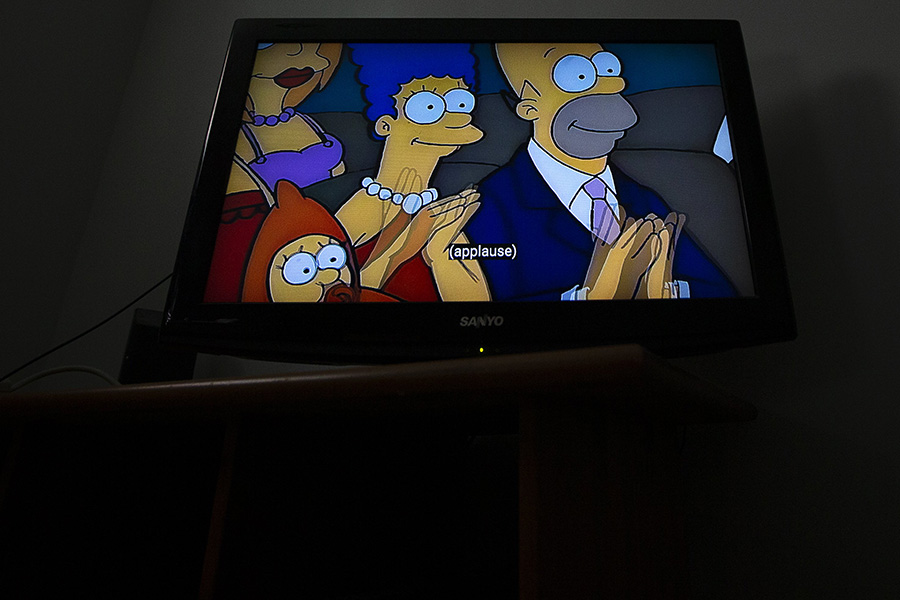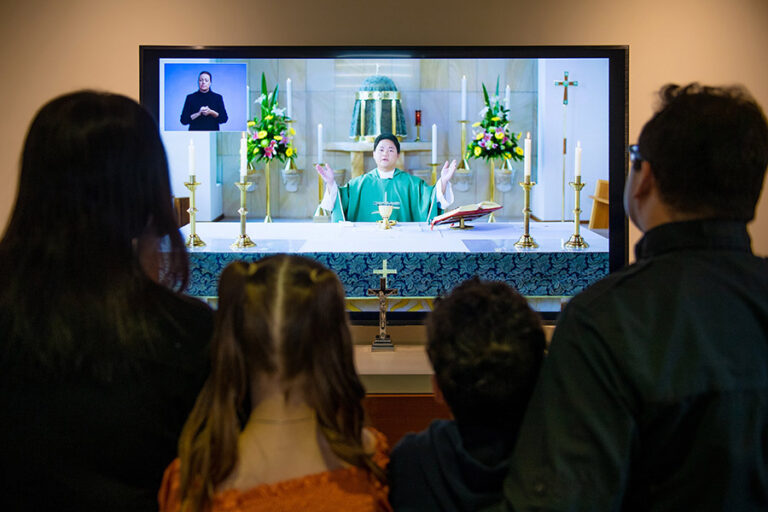WASHINGTON (CNS) — A long time ago, in a galaxy not so far away — it was our own galaxy — people watched television at no cost, with the exception of the cost of the set and the electricity to power it.
It would cost money to program this “radio with pictures.” That had to be paid for. Advertising worked with radio, after all, so why not TV?
Like radio, TV was envisioned as the mass medium for the masses. Well, those who could afford it, anyway. In TV’s early days, programs were sponsored by one company. “Sergeant Bilko,” aka “The Phil Silvers Show,” was sponsored by Philco. Perry Como appeared on “The Kraft Music Hall.”
But with the passage of time, sole sponsorship faded, and TV networks and local channels alike had to get their sales force ready to sell advertising time. With just three over-the-air networks accepting advertising, there was a limited inventory of time. The same was true for local channels, which actually went off the air around 1 a.m. and slept until 6 a.m. or so.

Yet as more time passed, merely having the biggest audience was not enough. Advertisers wanted to know just who was watching these shows. And that’s where demographics came in. Networks started targeting the 18- to 49-year-old demographic in their programming choices, believing that this age group would have enough open-mindedness to consider buying whatever was advertised and the disposable income to make that purchase. Advertisers were already hard at work doing the same.
Naturally, there were exceptions. News programming tended to attract an older audience, so advertisers wanted to pitch to the 25- to 54-year-old set. Saturday morning cartoons targeted TV’s youngest viewers; how many ads included the exhortation “Hey, kids!” in their come-ons?
Daytime TV was meant to entice anyone still at home during those hours: housewives, the unemployed. Otherwise, we never would have had Madge telling a manicure client “You’re soaking in it,” or the hairiest wrist I’ve ever seen on TV gripping a telephone receiver and asking: “Does your heart sink when the phone rings because it’s usually a debt collector threatening you with garnishments or repossessions?”
As independent stations and over-the-air networks started dotting the landscape, demographics changed, usually for the younger, more ad-impressionable audiences.
Then came cable TV, where viewers got to pay for the privilege of ordering up a set of channels — almost all of which carried advertising.
Satellite TV sprang up, the rooftop dish replacing the set-top box, but offering the consumer even more choices — with more commercials — and higher bills to boot. Welcome to the 500-channel universe!
Our latest advance is streaming TV. For those unclear on the concept, you pay a monthly fee in exchange for everything in that streamer’s library of titles and episodes.
Netflix made money hand over fist with its catalogue, and the streamer has been relentless in creating its own exclusive content. But its stock price took a hit when the number of subscribers went down for the first time in, well, maybe ever. That led to Netflix strategy on two fronts. One was trying to put an end to password sharing that lets others outside the household watch it free. The other was devising a service that cost less — but with commercials.
NBC’s Peacock debuted offering two parallel services: its regular service, with ads, and a premium service with no ads — but with an asterisk saying that some programming would include commercials.
If there is something insidious about all this, you’re right. While the Nielsen TV ratings service depends on the proper cross-section of America filling out its weekly diaries to indicate who’s watching what, the streaming service already knows who you are by the information you voluntarily submitted to it online in order to subscribe.
TV advertisers have longed for a way to target advertising to the specific demographics of the viewer. Online ads function in much the same way, albeit with a lot more hit-and-miss. If you’ve made an online purchase, it’s no surprise you’ll start seeing ads for that seller, or maybe its rivals. Or, if you mistakenly click on an ad, you risk seeing its ads for weeks on end. Like when I clicked on a survivalist meals-ready-to-eat website by mistake, and now its ads are still a regular feature of my Facebook feed.
Buyer beware: If you’re getting something free, there are likely strings attached in the form of advertising. And if you get suckered into subscribing to any service that still sells ads to raise revenue, you’ve got only yourself to blame.
Pattison is media editor for Catholic News Service.
When you keep your eye on TV, what do you see? What are your likes or dislikes? What are your concerns and criticisms? Be as general or as specific as you wish. Send your comments to: Mark Pattison, Media Editor, Catholic News Service, 3211 Fourth St. NE, Washington, DC 20017.
Read More Movies & Television
Copyright © 2022 Catholic News Service/U.S. Conference of Catholic Bishops








